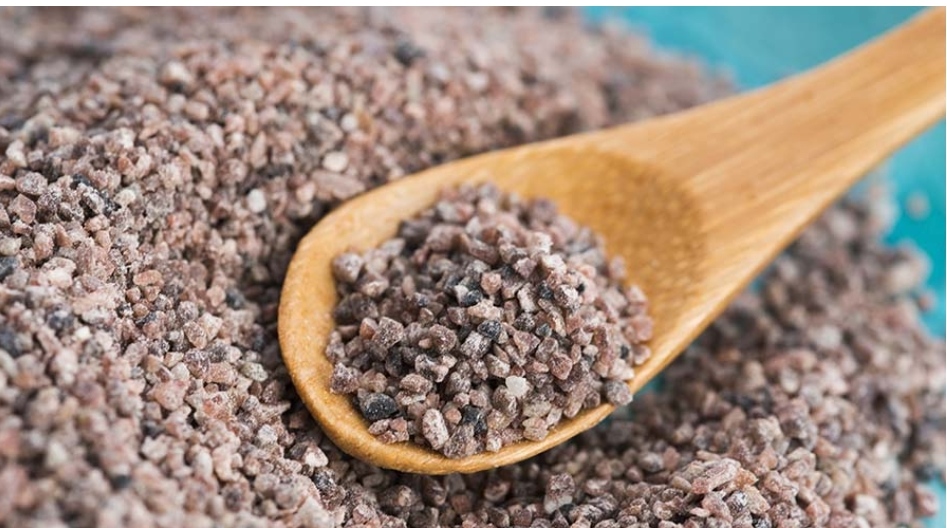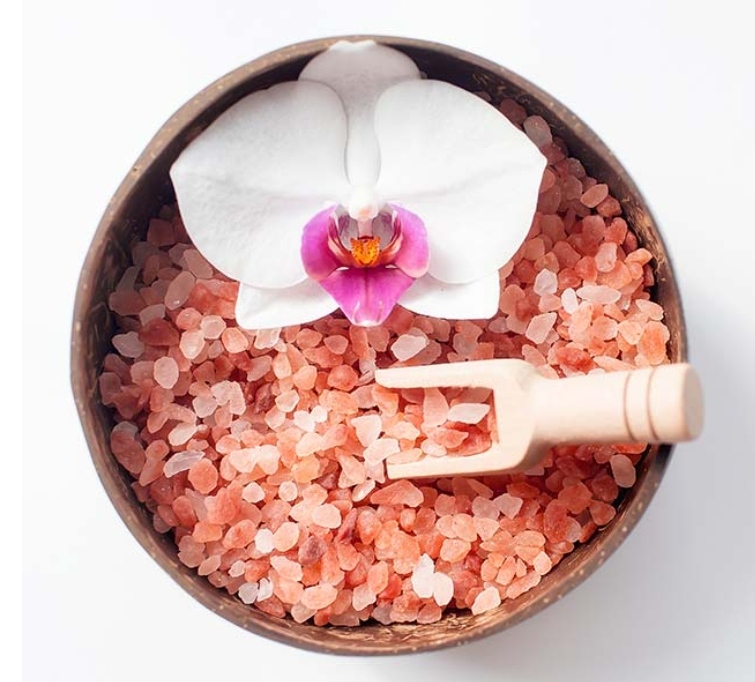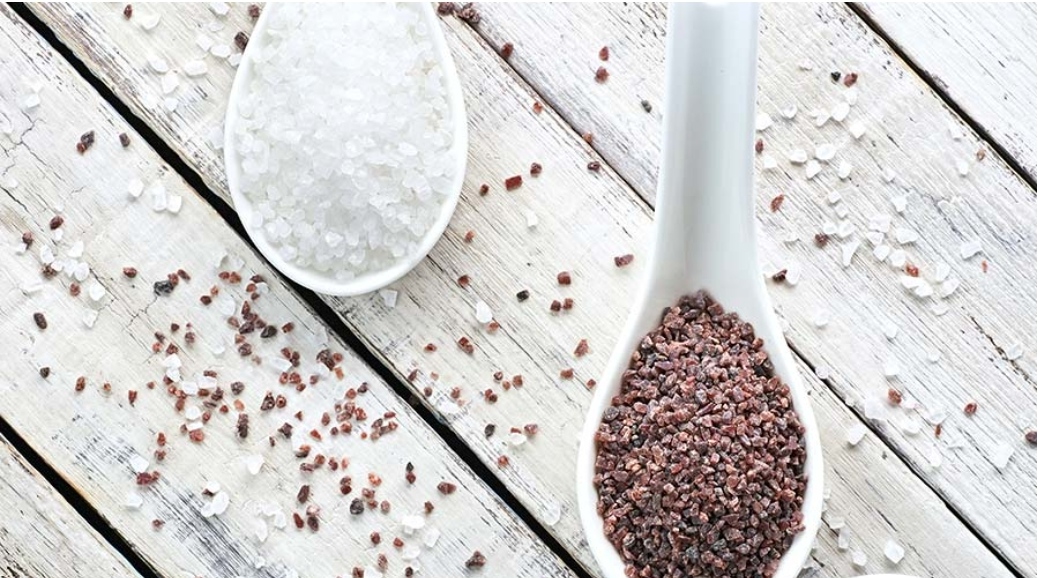Kala Namak/Black Salt: How It Is Made, Nutritional Values, Benefits for Health, Skin
We may have many staples in our diet. Rice, dal, ghee, oils, flours, whole and powdered spices and the list is endless. But, have you ever wondered, if there were one ingredient that would give all these components that extra taste, providing wholesome intense flavour to the dish, then what that would be?

Salt, obviously. Salt or namak is perhaps the only ingredient our body always needs it in the right amounts. While excess salt can up your blood pressure in a jiffy, the lesser sodium content will cause instant electrolyte imbalance. Love it or hate it, we all need salt in our dishes for that extra zing in life and that’s a fact, we all need to accept with a pinch of it. But, do you know that all salts are not actually extracted from the seawater?
Often termed as sodium chloride by the scientists, salt is a chemical compound that is not only confined to seawater but also found in the halite or rock salt mines of India, Nepal, Pakistan, Bangladesh and in certain Himalayan ranges. It is also amply available in few lakes with high salt concentration like Sambhar Salt Lake, near Ajmer Rajasthan and in the salt lakes of Mustang district of Nepal.
Quite a revelation, isn’t it? If that has surprised you, let us tell you one more secret. Unlike the free-flowing sparkly white salt, there is another variety available, this time in pitch black colour. Yeah! Really.
And as you read on, you will discover on why you need to embrace this black salt or Kala namak, Saindhav Meeth in Marathi, Intuppu in Tamil, Nalla Uppu in Telugu, Karutha Uppu in Malayalam as they call it in many languages of India and make a space for it in your kitchen cabinet.
Worldwide, black salt is also popular with other names like Kala noon, Himalayan rock salt, sulemani namak, pada loon, Indian volcanic rock salt, Saindhava Lavanam. According to the food experts, it is in fact a condiment, with large concentrations of sodium chloride and other several components, responsible for its colour and smell. Owing to the presence of Greigite, a type of mineral, this salt exudes dark brown to deep purple in colour while in the form of translucent crystals but turns to purple or pink when ground into powder. It is not black in colour, in its original form.
The composition of this Kala namak is quite unique. Besides the presence of sodium chloride in larger amounts, this salt also possesses impurities of sodium sulphate, sodium bisulphate, sodium bisulphite, sodium sulphide, iron sulphide and hydrogen sulphide in traceable amounts.
While sodium chloride provides the salt with its salty taste, iron sulphide is responsible for its dark purple colour. The other sulphur compounds give it that distinctive smell, but the presence of hydrogen sulphide is what provides it with that odour of curdled milk or rotten eggs.
Well, don’t turn up your nose yet. There is so much to know what gives this bright pink or purple salt that black colour and why it is done?
How Is Kala Namak Made?
Kala Namak is actually manufactured by heating it up at extremely high temperatures in the kilns and then is mixed with the seed of Harad or Black Myrobalan tree to imbibe certain therapeutic properties to it.
Though Kala namak is quite famous in India, it is usually classified into three varieties worldwide- Black Lava Salt, Black Ritual Salt and Himalayan Rock Salt.
Black Lava Salt:
Also known as Hawaiian rock salt, this one possesses earthly flavour and is originated in Hawaii. It is known for adding a smoky flavour to the dishes and is often sprinkled on the dishes at the end of cooking.
Black Ritual Salt:
Black ritual salt is not edible as it is made from mixing ashes, charcoal, sea salt and some artificial black colour. Also known as witches salt, it is generally sprinkled around the house or kept it under the bed to ward off evil spirits and negativity.
Black Himalayan Salt:
It is the most used salt variety for its deep, savoury taste. It not only provides medicinal properties but also gives earthly flavour to the dish.
Kala Namak in Ayurveda:
Black salt is not a fad or just any other food item that made a grand entry on to the Indian food scene, recently. It has always remained as an integral part of the Indian cuisine and in the aromatic dishes of Bangladesh, Pakistan and Nepal. The mention of Kala Namak is traced back to 300 BC and is highly acclaimed for its innumerable therapeutic properties. The great Ayurvedic practitioner and saint Maharishi Charak wrote extensively about the black salt in his scriptures like Charaka Samhita explaining its medicinal properties including its role of a laxative, how it aids in weight loss, promotes dental health and even calms down the patients suffering from hysteria.

Benefits of Black Salt:
Stimulates Digestion:
Kala namak works as an amazing remedy for those suffering from digestive issues. It stimulates the production of bile juices in the liver and in turn helps the body to absorb fat-soluble vitamins in the small intestine. The bile juices also aid in digestion and reduce flatulence.
Reduces Heartburn:
Ayurvedic practitioners recommend substituting black salt with regular free-flowing salt, to bring down heartburn. Kala namak restricts the acid levels and reduces reflux and other symptoms associated with Gastroesophageal Reflux Disease (GERD).
Brings Down Bloating:
If you are suffering from bloating, all you need is a pinch of black salt to bring it down immediately. The unique chemical composition of black salt including high levels of sodium chloride along with iron, manganese, ferric oxide, sulphate helps in reducing the formation of gases thus bringing down bloating and flatulence.
Eases Muscle Cramps:
If you often wake up suddenly with a muscle cramp in the calf muscles, it is an indication of dehydration or extra strain on your leg muscles. Potassium, a mineral available abundantly in the black salt aids in the proper functioning of muscles and prevents sudden painful cramps.
Regulates Blood Pressure:
Black salt is often recommended as an alternative to white salt. It serves as a natural blood thinner and can regulate blood pressure. However, doctors caution against its high intake as it may interfere with your blood pressure. The general recommended quantity is 6 grams per day for a healthy person and 3.75 grams for patients suffering from high BP.
Improves Iron Content:
Owing to the presence of various natural minerals, regular consumption of black salt will show significant improvement in the levels of iron. Doctors recommend substituting regular salt with Kala namak to fight anaemia. However, if you are planning to add it to the diet of a child, check with your doctor first.
Treats Sinusitis:
Black salt is highly beneficial for those suffering from respiratory issues and sinusitis. Inhaling hot steam infused with black salt opens up clogged nostrils, provides relief from phlegm, soothes dry cough and throat. Gargle warm water with black salt to beat the inflammation of tonsils.
Decreases Complications Of Diabetes:
Though black salt may not significantly reduce the levels of blood glucose, it will aid in reducing the other related complications like elevated blood pressure, cardiovascular diseases. Substitute it with regular free-flowing salt for better taste and health.
Eases Joint Pains:
It is a common practice in Indian households to practice hot massage to ease joint pains. Take a clean cloth and put some warm black salt in it. Apply this black salt poultice and press it slightly on the affected areas for 5 minutes. Do it regularly for the inflammation in joints to reduce and to get instant relief from pains.

Strengthens Bones:
Do you know that salt is as important as calcium for stronger bones? This is because one-fourth of the total salt content in the human body gets stored in the bones. If you are above 40 with a family history of osteoporosis, it’s time to include black salt in your daily diet, as this disorder can deplete the levels of salt in the bones making it weaker. The therapeutic properties of black salt help in preventing osteoporosis.
Sound Sleep:
Consumption of Kala namak can reduce the incidence of insomnia. Sleeplessness or insomnia is a result of melatonin imbalance. Eating food sprinkled with black salt for dinner balances the levels of melatonin and aids in getting a good night’s sleep.
Black Salt And Lemon For Weight Loss:
We all know that drinking warm lemon water with honey helps in losing weight. Adding a 1/3rd of teaspoon salt to this water and give it a complete stir. Consume it on empty stomach daily in the morning for shedding those extra calories.
How Does It Help?
Kala Namak is loaded with a wide range of nutrients and minerals that serve as detoxifying agents. The anti-bacterial components present in this unique salt help in flushing out the toxins and cleanse the body from within. Flushing out toxins will make you lose weight eventually.
Is Black Salt Good For Kidney Patients?
Well, the first strong suggestion the kidney disease patients receive from the doctors is to decrease the salt intake. Kidneys are vital organs that filter out unwanted fluids in the body and filter the blood. Potassium and sodium play a key role in the proper functioning of kidneys and a high salt diet cause irreparable loss to these vital organs.
If you are diabetic or suffering from heart-related ailments, it’s time to reduce the intake of salt. The high amount of sodium not only alters the salt balance in the body but also excretes protein in the urine, often an indication of poor kidney function.
Besides kidney dysfunction, high salt intake can also result in kidney stones or renal stones. A painful condition, renal stones are caused due to hard accumulation of minerals and acid salts obstructing the flow of urine and leading to nausea.
Many traditional practitioners, however, recommend substituting regular salt with black salt, thanks to its therapeutic properties. You can add it in your regular diet, for healthier kidney function. However, it is also important to note that the regular permissible levels are 6 grams per day or even less.
Kala Namak For Skin and Hair:
The uses of black salt are numerous, and it is also extensively used in skincare.
Exfoliation:
Black salt is an amazing exfoliator and it can remove dead skin cells instantly. If you want to rejuvenate after a tiring day at work, add half-spoonful of black salt to your shower. It also heals cracked heels, swelling on the skin caused due to mosquito or ant bites. Do not add it more than half-a-spoon as it may lead to skin itching and irritation.
Hair Healthy:
The goodness of black salt, when consumed with tomato juice or with any vegetable juice, strengthens hair follicles from the scalp. If you are suffering from dandruff or hair loss, consume it daily for an itchy-free scalp.
How To Eat Black Salt?
Black salt or Kala namak can be used like regular salt. Since it possesses a distinctive smell and taste add it in limited quantities.
In case, if you want to take it for the digestive issues, ground black salt into a fine powder, add lemon juice and ajwain for instant relief from heartburn, acidity and flatulence. Traditional doctors recommend taking this mixture before meals or at night before sleeping for positive results.
It is also recommended to chew on a pinch of black salt after meal for strengthening the gums and better digestion.




